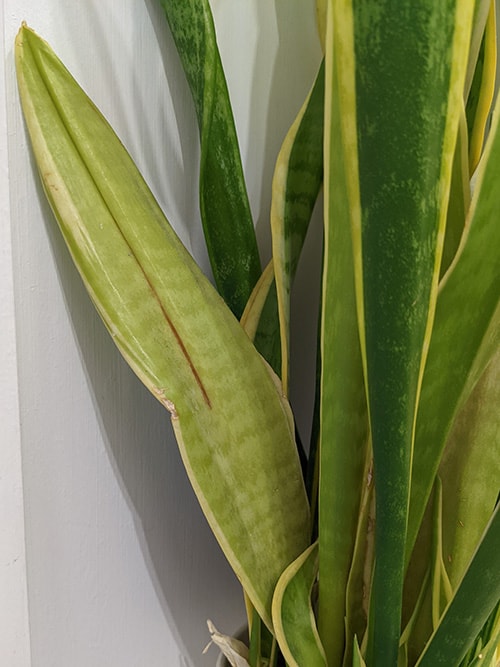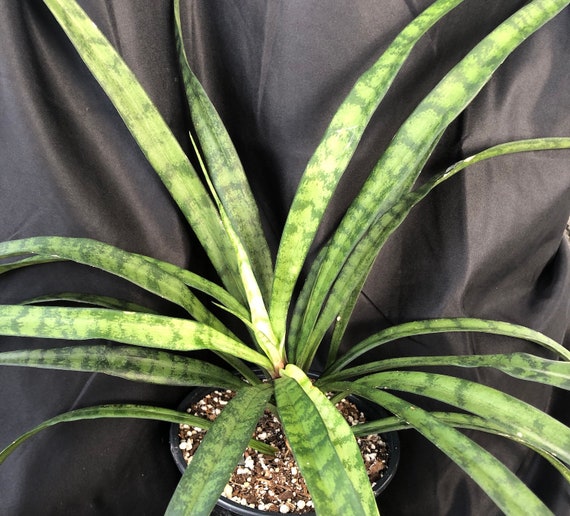The Facts About Snake Plant Leaves Turning Yellow Uncovered
Table of ContentsNot known Facts About Snake Plant Leaves Turning YellowSnake Plant Leaves Turning Yellow Things To Know Before You Get ThisAn Unbiased View of Snake Plant Leaves Turning YellowAn Unbiased View of Snake Plant Leaves Turning YellowHow Snake Plant Leaves Turning Yellow can Save You Time, Stress, and Money.10 Easy Facts About Snake Plant Leaves Turning Yellow Explained
Here are 7 reasons your snake plant's leaves can be transforming yellow and exactly how to fix it. Numerous different plant troubles can trigger yellow leaves, or chlorosis. Chlorosis takes place when plants don't have the micronutrients they need to produce chlorophyll, that makes foliage environment-friendly and enables plants to convert sunshine right into food.Snake plants are drought tolerant thanks to their delicious fallen leaves (Snake Plant Leaves Turning Yellow). These plants expand ideal in loosened, well-drained soil that's enabled to dry out totally between waterings and might just require water once each month during winter. Overwatering can protect against origins from absorbing moisture and nutrients that the plant requires and can also cause root rot
A potbound plant can't absorb nutrients from the soil. If your serpent plant is chock-full or outgrowing its pot, this may be the reason for yellow fallen leaves. An occasional yellow fallen leave is entirely regular for a serpent plant. As the plant ages, old fallen leaves yellow, die, and hand over as they're changed with new ones.
10 Simple Techniques For Snake Plant Leaves Turning Yellow

If the fallen leaves on your snake plant are getting soft, it's usually a sign of excessive water. Serpent plants store water in their leaves and if they're overwatered, the fallen leaves can end up being soft and mushy. If you think your snake plant is being overwatered, permit the dirt to dry out totally prior to sprinkling again.
Yes, some yellowing is normal and to be anticipated on older fallen leaves, especially as snake plants age. If the plant is or else healthy and the fallen leaves are just gently yellowed then there is no cause for issue. If the leaves are significantly yellowed or if there are other signs of distress after that it's ideal to take action.
Some Known Details About Snake Plant Leaves Turning Yellow

This can differ depending on the dimension of the view it pot, the kind of potting mix, and the temperature and moisture levels. As a whole, snake plants ought to be watered each to 2 weeks. During the cold weather, you can decrease watering to as soon as a month. If you think your serpent plant has been overwatered, the primary step is to stop sprinkling it.
With a little investigation, you should have the ability to figure out the cause and take actions to fix the issue and have a healthy snake plant. - Snake Plant Leaves Turning Yellow
Getting The Snake Plant Leaves Turning Yellow To Work
The serpent plant is an awesome houseplant. The serpent plant is one of those plants that are wonderful for expanding inside your home in a terrarium, Serpent plants can expand rather huge, yet they additionally often tend to be pretty low-maintenance.
When the soil is overwatered, the plant cells take in more water than additional resources they can store. Read right here to Leaves come to be soaked and yellow as they absorb extra water. Sagging serpent plant leaves are caused by soaked-up leaf cells shedding their suppleness. You may observe that your snake plant will certainly come to be black or brownish if the yellow patches are not corrected by fixing overwatering.
It is, therefore, most likely that your plant will identify yellow patches on its fallen leaves if you overfeed it with plant food during winter. The fallen leaves of serpent plants are additionally susceptible to yellowing when overfed, particularly if the roots are breakable. Repotting your yellowing, sprinkling just when the dirt dries out, and giving ideal temperature and light problems can wait.
About Snake Plant Leaves Turning Yellow
To try here stop yellowing triggered by overwatering, quit watering the snake plant till the dirt entirely dries out. Do not water even more than when a week. Water your snake plant only when the top 2 inches of dirt really feel dry. While awaiting the water to drain, water your snake plant early in the early morning if your soil is slow-draining.
Your can be eliminated by removing the yellow pointers. The pruned leaves should grow longer if they are sprinkled effectively and have optimal light and temperature conditions. It is essential to keep in mind that the sharp pointers will not regrow, creating them to stand apart from the remainder of the leaves.
It will not take long for the fallen leaves to grow back and grow like the healthy and balanced fallen leaves around them. Alternately, you can get rid of affected leaves from the base of the plant. The shows that it's getting way too much or as well little light or nutrients. The essential message is to allow the snake plant time to recover.
Rumored Buzz on Snake Plant Leaves Turning Yellow
So scroll the short article till the end to discover the remedy. Listen to this article right here: The circumstance can be anticipated if you have actually had your snake plant for a long period of time, and yellowing happens on the lower leaves as an all-natural aging cycle. It is common for the Sansevieria leaves to turn yellow due to amateur mistakes and when the plant is just gotten from the nursery for repotting.
Some of one of the most typical reasons are listed here. Sansevierias like completely dry environments and prefer little water kept at a gap of as soon as or twice once a week in summer season and regular monthly in wintertime. But when the water dosage leaves control, your Sansevieria will deal with overwatering. The most common problem issued by overwatering is origin rot leading to mushy origins and stems with a nasty smell.